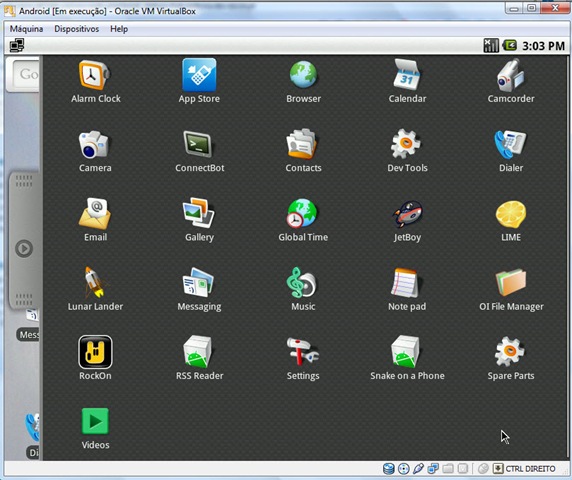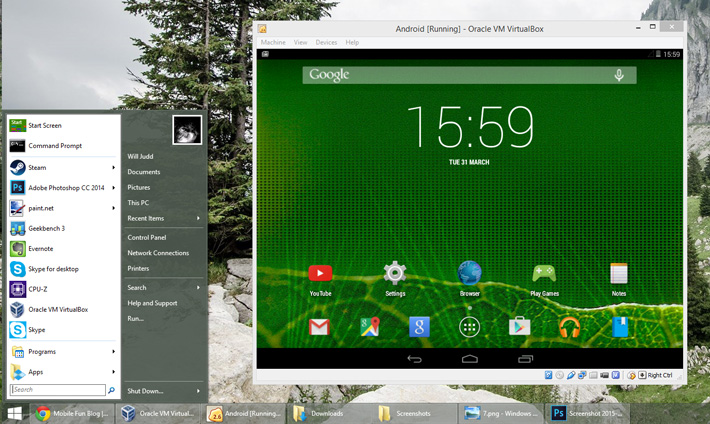
Android-x86 8.1-RC1 Oreo Images Available for VirtualBox and VMware
- Here's how I setup Hardware OpenGL for Linux Android x86: First of all, your computer must have graphics chipset with OpenGL hardware acceleration enabled. During this guide, I will setup this VirtualBox image on my HP mini 210 Ubuntu 12.04 Operating System. You'll need an Android x86 OVA file and buildroidrenderer package which can be.
- After downloading the OVA, you can double click it to launch it in VirtualBox. Or, if you prefer, choose File Import Appliance and browse for your OVA file. It is probably best if you ask the system to reinitialize the MAC address, but this doesn't seem to be a necessity. Start the Android X86 VM by pressing the green run button in VirtualBox.
 Umair
UmairAndroid-x86 developers released the testing version of Android-x86 8.1-RC1 Oreo, it is only available for both architectures 32bit and 64bit, this is the first release candidate for Android-x86 8.1 Oreo: “The Android-x86 project is glad to announce the 8.1-rc1 release to public. This is the first release candidate for Android-x86 8.1 (oreo-x86). Support both 64-bit and 32-bit kernel and userspace; Support OpenGL ES 3.x hardware acceleration for Intel/AMD/Nvidia, VMware and QEMU(virgl) by Mesa 18.1.2; Support OpenGL ES 2.0 via SwiftShader for software rendering on unsupported GPU devices; Support hardware accelerated codecs on devices with Intel HD & G45 graphics family; Support secure booting from UEFI and installing to UEFI disk; A text based GUI installer; Add theme support to GRUB-EFI; Support Multi-touch, Audio, Wifi, Bluetooth, Sensors, Camera and Ethernet (DHCP only); Auto-mount external usb drive and sdcard; Add Taskbar as an alternative launcher which puts a start menu and recent apps tray on top of your screen and support freeform window mode; Enable ForceDefaultOrientation on devices without known sensors. Portrait apps can run in a landscape device without rotating the screen; Support arm arch apps via the native bridge mechanism…” You can checkout complete release announcement here.
We are providing you virtual images for latest version of Android-x86 8.1-RC1 Oreo for VirtualBox.

You can download VDI and VMDK images for VirtualBox & VMware from here.
What began as a project to run Android on certain netbook models has become a fully functional operating system that can be used on many combinations of hardware. It can be installed as an operating system on a desktop, and even be set up to run alongside other systems on the same machine. In fact, Android is based on the Linux kernel.
When launching Android on a PC, the computer will think you're using a tablet, although you can use it perfectly with a keyboard and mouse and even use shared machine resources like your Internet connection or USB ports, with features continuing to be added with each new version.
It is also possible to virtualize Android through popular programs like VMWare or VirtualBox, where you'll find it much easier to configure and test the operating system.
There are some obvious differences from using an actual Android, such as the fact that very few applications work correctly, so if you want to install Android to play games, you might want to consider other options like Bluestacks. The real potential of this project lies in its use by developers; in fact, it comes with several applications and configuration tools included for that purpose.
 How to virtualize Android-x86 on VirtualBox
How to virtualize Android-x86 on VirtualBox Android X86 Ova
The Android-x86 project has now been in effect for several months. It’s a free and open initiative to take the Android operating system to computers with AMD and Intel processors instead of limiting it to the ARM architecture that is standard on smartphones and tablets. When you use the Linux kernel, it’s possible to install and run Android natively on desktop computers. In this tutorial we’re going to virtualize Android 4.4 Kit-Kat using VirtualBox, although you can extend to a real installation of the operating system on a computer by burning the ISO onto your hard disk or running it via USB.
Android X86 Oreo Iso
To install and experience the Android x86 on PC you nee two things VirtualBox or Vmware software and Android x86 ISO image or Android x86 VM image. Android, the most popular operating system, now not only just limited to your smartphones. If you have the curiosity to use it on your personal computer (PC) then you can do it.